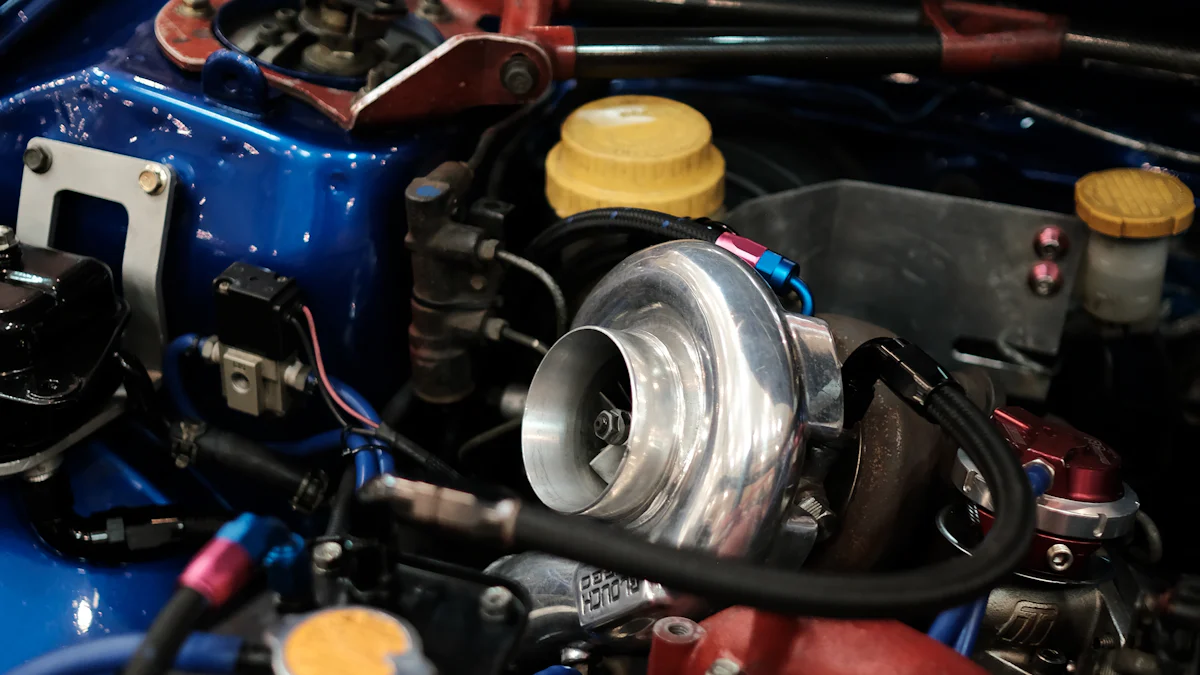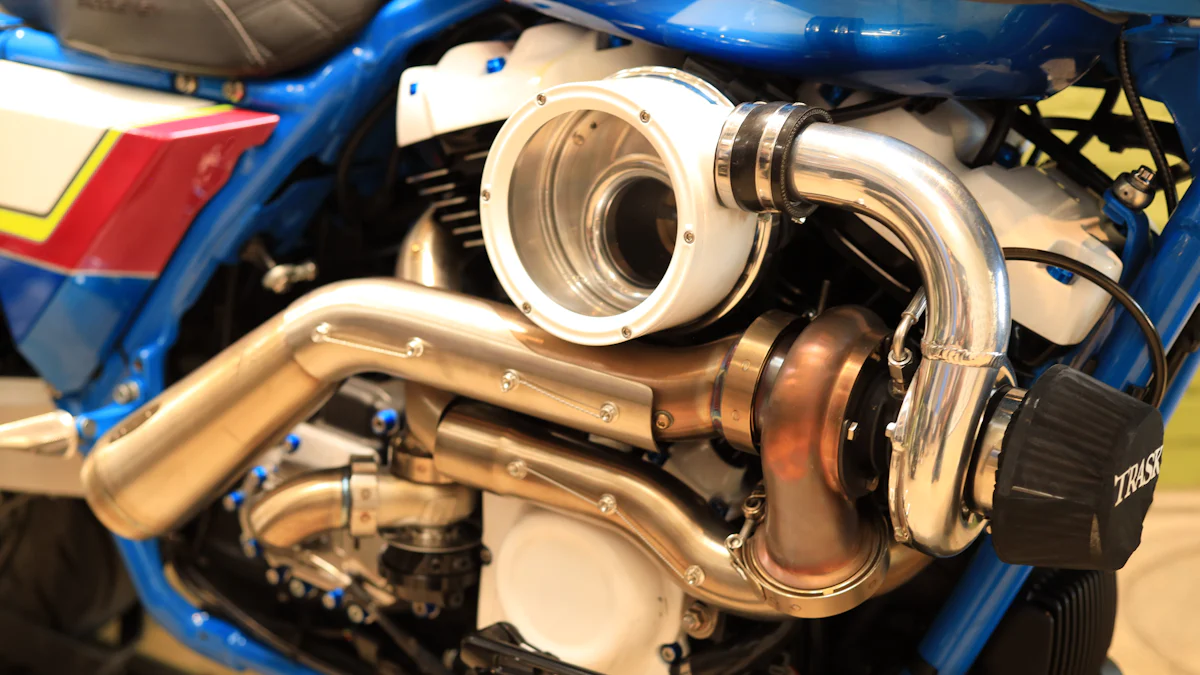What happens if turbocharger pipe is broken?

A broken turbocharger pipe disrupts airflow to your engine. This reduces power and increases harmful emissions. Without proper airflow, your engine may overheat or sustain damage. You should address this issue immediately. Ignoring it could lead to costly repairs or even complete engine failure, putting your vehicle at serious risk.
Key Takeaways
- A broken turbocharger pipe can significantly reduce engine power and fuel efficiency, making it crucial to address any symptoms like poor acceleration or unusual noises immediately.
- Ignoring a damaged turbocharger pipe can lead to severe engine damage, increased emissions, and safety risks, emphasizing the importance of regular inspections and prompt repairs.
- Using high-quality replacement parts and adopting gentle driving habits can prevent turbocharger pipe issues, ensuring your vehicle runs efficiently and reliably.
Symptoms of a Broken Turbocharger Pipe

Loss of engine power
A broken turbocharger pipe disrupts the airflow to your engine. This reduces the amount of compressed air entering the combustion chamber. As a result, your engine produces less power. You may notice your vehicle struggling to maintain speed, especially when driving uphill or carrying heavy loads.
Poor acceleration
When the turbocharger pipe is damaged, your vehicle’s acceleration becomes sluggish. The engine cannot receive the necessary boost from the turbocharger. This delay in response can make overtaking or merging into traffic more challenging and unsafe.
Excessive exhaust smoke
A damaged turbocharger pipe can cause an imbalance in the air-fuel mixture. This often leads to incomplete combustion, which produces excessive exhaust smoke. You might see thick black or gray smoke coming from your tailpipe, a clear sign that something is wrong.
Unusual engine noises
A broken turbocharger pipe can create strange sounds under the hood. You might hear hissing, whistling, or even a loud whooshing noise. These sounds occur because of air escaping from the damaged pipe. Pay attention to these noises, as they often indicate a problem with the turbocharger system.
Reduced fuel efficiency
A faulty turbocharger pipe forces your engine to work harder to compensate for the loss of compressed air. This increases fuel consumption. You may find yourself refueling more often than usual, which can become costly over time.
Tip: If you notice any of these symptoms, inspect your turbocharger pipe immediately. Early detection can save you from expensive repairs.
Risks of Driving with a Broken Turbocharger Pipe
Engine damage from unfiltered air
A broken turbocharger pipe allows unfiltered air to enter your engine. This air often contains dirt, debris, or other harmful particles. These contaminants can scratch or damage internal engine components like the pistons or cylinders. Over time, this wear and tear can lead to costly repairs or even complete engine failure. Protecting your engine from unfiltered air is essential to maintaining its longevity.
Increased emissions and environmental impact
When the turbocharger pipe is damaged, your engine struggles to maintain the correct air-fuel ratio. This imbalance causes incomplete combustion, which increases harmful emissions. Your vehicle may release more carbon monoxide, hydrocarbons, or soot into the environment. These pollutants contribute to air pollution and harm the planet. Fixing the pipe promptly helps reduce your car’s environmental footprint.
Oil leaks and potential engine seizure
A damaged turbocharger pipe can disrupt the turbocharger’s oil system. This disruption may cause oil leaks, which reduce the lubrication your engine needs to function properly. Without enough oil, engine components can overheat and seize up. An engine seizure is a severe issue that often requires a complete engine replacement. Addressing the problem early can prevent this outcome.
Safety risks due to reduced performance
Driving with a broken turbocharger pipe compromises your vehicle’s performance. Reduced power and poor acceleration make it harder to respond to traffic situations. For example, merging onto highways or overtaking other vehicles becomes riskier. These performance issues can increase the likelihood of accidents, putting you and others on the road in danger.
Note: Ignoring a broken turbocharger pipe can lead to serious consequences. Address the issue as soon as possible to avoid long-term damage and safety risks.
Fixing a Broken Turbocharger Pipe

Diagnosing the problem
To fix a broken turbocharger pipe, you first need to identify the issue. Start by inspecting the pipe visually. Look for cracks, holes, or loose connections. Pay attention to any oil residue around the pipe, as this often indicates a leak. If you hear unusual sounds like hissing or whistling while driving, these could also point to a damaged pipe. Use a diagnostic tool to check for error codes related to the turbocharger system. These codes can help confirm the problem and pinpoint the exact location of the damage.
Temporary fixes vs. permanent repairs
Temporary fixes can help you get back on the road quickly, but they are not a long-term solution. For example, you can use duct tape or a silicone sealant to patch small cracks in the turbocharger pipe. However, these fixes may not withstand high pressure or heat for long. Permanent repairs involve replacing the damaged pipe with a new one. This ensures the turbocharger system works efficiently and prevents further engine issues. Always prioritize permanent repairs to maintain your vehicle’s performance and safety.
When to consult a professional mechanic
If you cannot diagnose the problem or the damage seems extensive, consult a professional mechanic. They have the tools and expertise to assess the turbocharger system thoroughly. A mechanic can also ensure the replacement pipe is installed correctly. Attempting complex repairs without proper knowledge can worsen the issue. Trusting a professional guarantees the job is done right and saves you time and money in the long run.
Tip: Regularly inspect your turbocharger pipe to catch problems early. Early detection can prevent costly repairs and keep your vehicle running smoothly.
Preventing Turbocharger Pipe Issues
Regular maintenance and inspections
Regular maintenance is the best way to prevent problems with your turbocharger pipe. Inspect the pipe for cracks, leaks, or loose connections during routine vehicle checkups. Look for signs of oil residue or unusual noises, as these often indicate early damage. Cleaning the turbocharger system also helps remove dirt and debris that could weaken the pipe over time. By staying proactive, you can catch minor issues before they turn into costly repairs.
Using high-quality replacement parts
When replacing a damaged turbocharger pipe, always choose high-quality parts. Cheap or low-grade materials may not withstand the high pressure and heat generated by the turbocharger system. These parts often fail prematurely, leading to repeated repairs. High-quality replacement parts provide better durability and performance. They also ensure your engine receives the proper airflow, which improves efficiency and reduces the risk of further damage.
Avoiding excessive strain on the turbocharger system
Driving habits play a significant role in the health of your turbocharger pipe. Avoid sudden acceleration or over-revving the engine, as these actions put extra strain on the turbocharger system. Allow your engine to warm up before driving and cool down after long trips. This helps maintain the turbocharger’s temperature and prevents unnecessary stress on its components. Gentle driving habits can extend the lifespan of your turbocharger pipe and keep your vehicle running smoothly.
Tip: Preventative care saves money and ensures your turbocharger system operates at its best.
A broken turbocharger pipe affects your vehicle’s performance, fuel economy, and safety. Ignoring it can lead to severe engine damage. Address the issue immediately to avoid costly repairs. Regular maintenance and inspections help prevent problems. Taking care of the turbocharger system ensures your car runs efficiently and stays reliable for years.
FAQ
What causes a turbocharger pipe to break?
Excessive heat, pressure, or poor-quality materials weaken the pipe over time. Physical damage from debris or improper installation can also lead to cracks or leaks.
Can you drive with a broken turbocharger pipe?
You can, but it’s unsafe. Reduced engine performance, increased emissions, and potential engine damage make driving risky. Fix the issue immediately to avoid further complications.
How much does it cost to replace a turbocharger pipe?
Replacement costs vary. On average, you might spend
150–500, depending on your vehicle model and labor charges. Using high-quality parts ensures better durability and performance.
Tip: Regular inspections help you catch issues early, saving you money on repairs.
Post time: Jan-06-2025